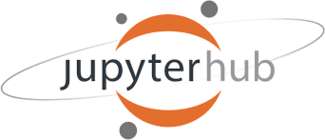JupyterHub: Difference between revisions
From CSDMS
No edit summary |
No edit summary |
||
| Line 22: | Line 22: | ||
Of course, these are just suggestions. How do you think you'll use the CSDMS JupyterHub? | Of course, these are just suggestions. How do you think you'll use the CSDMS JupyterHub? | ||
If you have questions, or if you'd like more information, please contact us through the [https://github.com/csdms/help-desk CSDMS Help Desk]. | If you have questions, or if you'd like more information, please contact us through the [https://github.com/csdms/help-desk CSDMS Help Desk]. | ||
| Line 42: | Line 35: | ||
# Once you're approved, [https://csdms.rc.colorado.edu/hub/login sign in] to the Hub! | # Once you're approved, [https://csdms.rc.colorado.edu/hub/login sign in] to the Hub! | ||
== | == Resources == | ||
If you're new to using Jupyter Notebook, here are a few resources to help you start: | |||
* [https://jupyter-notebook.readthedocs.io/en/stable/notebook.html The Jupyter Notebook] | |||
* [https://jupyter-notebook.readthedocs.io/en/stable/ui_components.html The Notebook interface] | |||
* [https://jupyter-notebook.readthedocs.io/en/stable/examples/Notebook/examples_index.html Notebook examples] | |||
* [https://jupyter-notebook.readthedocs.io/en/stable/troubleshooting.html What to do when things go wrong] | |||
--[[User:Mpiper|Mpiper]] ([[User talk:Mpiper|talk]]) 10:06, 18 June 2020 (MDT) | --[[User:Mpiper|Mpiper]] ([[User talk:Mpiper|talk]]) 10:06, 18 June 2020 (MDT) | ||
Revision as of 11:59, 7 July 2020
The CSDMS JupyterHub
CSDMS has a JupyterHub!
https://csdms.rc.colorado.edu
It's free and available for all CSDMS members--students, faculty, researchers--to use.
What can you do with the CSDMS JupyterHub? Here are a few ideas:
- Work on an assignment
- Prototype and test Python code for a model
- Run a model through PyMT or Landlab
- Create a visualization for a journal article
- Share a Notebook with colleagues
- Deliver content for a multiuser workshop (like this and this)
- Run a lab from the CSDMS EKT repository
- Highlight your research and share it with others in the community by developing your own EKT lab
- Access a Linux OS and shell
Of course, these are just suggestions. How do you think you'll use the CSDMS JupyterHub?
If you have questions, or if you'd like more information, please contact us through the CSDMS Help Desk.
Getting access to the CSDMS JupyterHub
Although the CSDMS JupyterHub is publicly available, it's password-protected. To get a login on the CSDMS JupyterHub, follow these steps.
- If you're not already a CSDMS member, sign up
- Create a login, providing a username and password--they can be whatever you like
- Request authorization for your new account through the CSDMS Help Desk--if you don't already have a GitHub account, you'll be asked to make one
- Once you're approved, sign in to the Hub!
Resources
If you're new to using Jupyter Notebook, here are a few resources to help you start:

